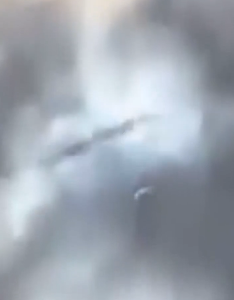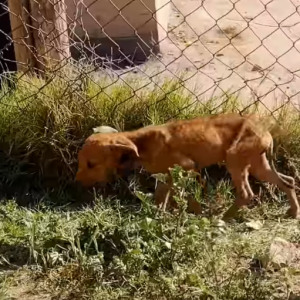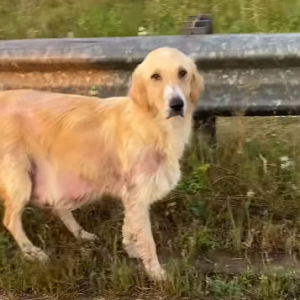
Amphicotylus milesi was one of the first crocodile ancestors that looked like its modern descendents. Image © Masato Hattori
An ancient relative of modern crocodiles and alligators shows that their semi-aquatic lifestyle dates back over 150 million years.
Amphicotylus milesi was able to close its throat off from the mouth while continuing to breathe, allowing it to tackle prey while still in water.
A well-preserved ancestor of the crocodiles has shown how the group of reptiles became the feared aquatic predators of today.
Described as the ‘uncle’ of modern crocodilians, Amphicotylus milesi had a similar skull to its later relatives that is believed to have allowed it to seal its throat. This would have enabled the predator to tackle prey in the water without the risk of drowning.
Dr Stephan Spiekman, who researches ancient crocodiles at the Museum and was not involved with the study, says, ‘Amphicotylus milesi is a fantastic specimen, and seeing it as a mounted specimen is unbelievable as it almost looks like a modern crocodile.
‘It was a member of the goniopholididae, which have a similar semi-aquatic lifestyle and a generally similar skull shape and skeleton to modern crocodiles. They’re one of the earliest branching lineages in a group called neosuchia, which includes all modern crocodilians and their closest ancestors.’
The findings, led by researchers at Japan’s Hokkaido University, were published in Royal Society Open Science.

The skeleton discovered in Wyoming is one of the best preserved goniopholididae specimens. Image © Gunma Museum of Natural History
In a while, crocodiles
The earliest ancestors of the crocodiles evolved around 200 million years ago during the Late Triassic and Early Jurassic.
These ancestors were smaller than most living crocodilians, with a shorter snout. However, they did possess a secondary bony palate which separated the passage between their internal and external nostrils which all of their descendants also had.
While crocodilians tend towards similar lifestyles now, many of their ancient relatives were very different from one another.

‘Crocodiles are known as living fossils, so you might have the idea that they have looked the same for millions of years,’ Stephan says. ‘Nowadays, they are all semi-aquatic and predators of fish and other prey, but they have a very interesting evolutionary history.
‘They started out living on land where they were generally smaller and a lot more active. Some like Sarcosuchus were enormous predators, while others were herbivores and omnivores.’
These diverse species and their descendants subsequently died out as carnivorous crocodyliformes became the dominant form.
The goniopholididae were one group of these reptiles which arose during the Jurassic Period. They possessed many of the features that are common to modern crocodilians, including a similar body plan from which a semi-aquatic lifestyle has been suggested.

Their semi-aquatic lifestyle is further supported by the possession of the gular valve, which seals off the mouth from the throat using a flap. This allows the reptile to continue to breathe through its nostrils while the rest of its head is underwater.
‘We as humans have a secondary palate, but crocodiles are rare among reptiles in having one,’ Stephan explains. ‘It keeps the nasal cavity and mouth separate, with an opening at the back of the throat instead. However, crocodiles have the gular valve behind the mouth which can separate it from the nose, allowing them to breathe even if their mouth is underwater.
‘The valve is a fundamental thing to the way crocodiles live and hunt nowadays, allowing them to sit in the water with their mouth open.’
This flap, however, contains cartilaginous structures that don’t fossilise well, making it harder to work out when the gular valve first evolved.
As one of the most well-preserved specimens of the goniopholididae, Amphicotylus milesi has one of these cartilaginous elements preserved.
Taking a bite

The specimen was uncovered in the Morrison Formation in Wyoming, from which many dinosaur species have been uncovered, including Dippy the Diplodocus unearthed in 1899.
Amphicotylus milesi is separated from its closest relatives through its large snout, a backward extension of its nose duct and a short, curved tongue bone.
These features are similar to modern crocodiles, which suggests Amphicotylus milesi would also have possessed a gular valve-like structure. Over time, this is likely to have helped the reptiles specialise as the ambush predators they are today. While their teeth aren’t able to tear flesh, they act instead like a clamp.
After lying in wait in the water, modern crocodilians bite onto their target with some of the strongest bite forces in the animal kingdom, making it very hard for the target to get free. The crocodilians then perform a behaviour known as a death roll, where they twist around to tear flesh from the bone.
With crocodiles and alligators spread across every continent except Europe and Antarctica, adaptations to their throat and skull over 155 million years ago helped ensure their success as a dangerous predator of the world’s waterways.





